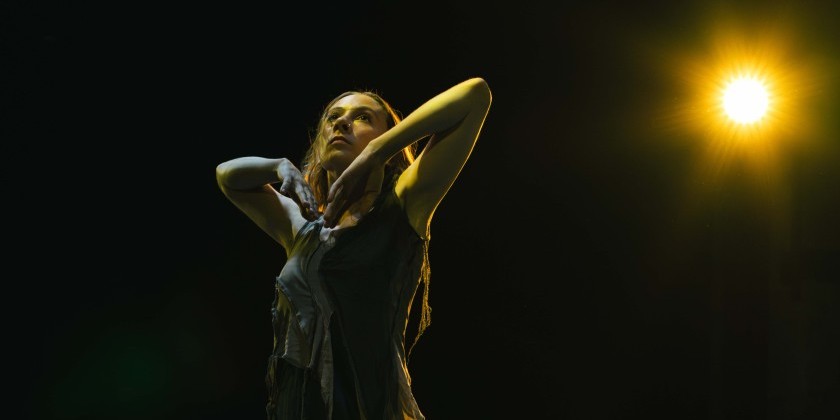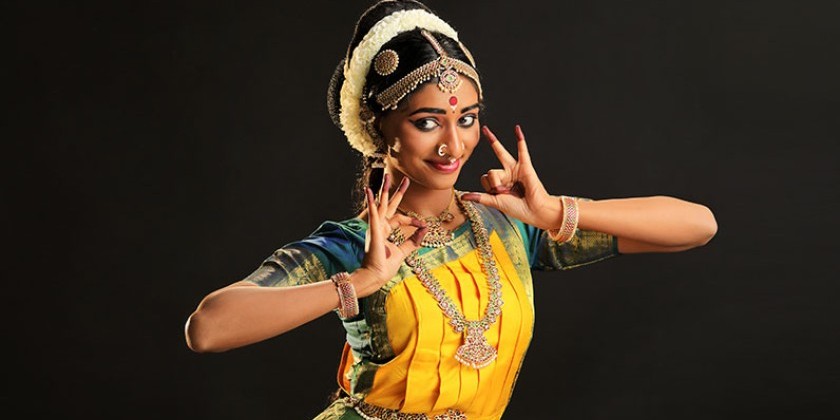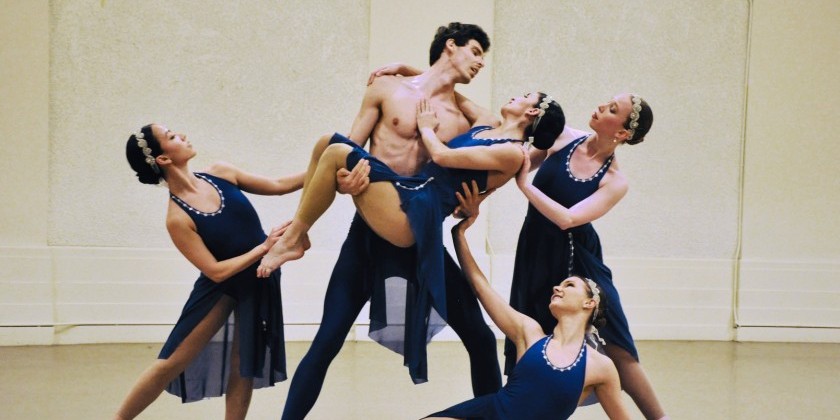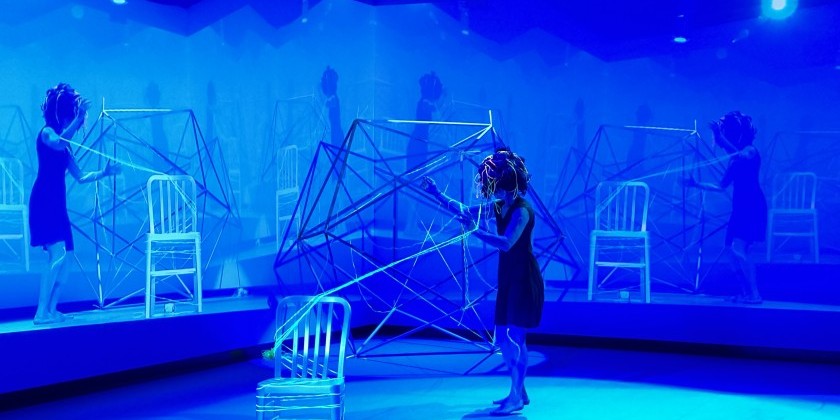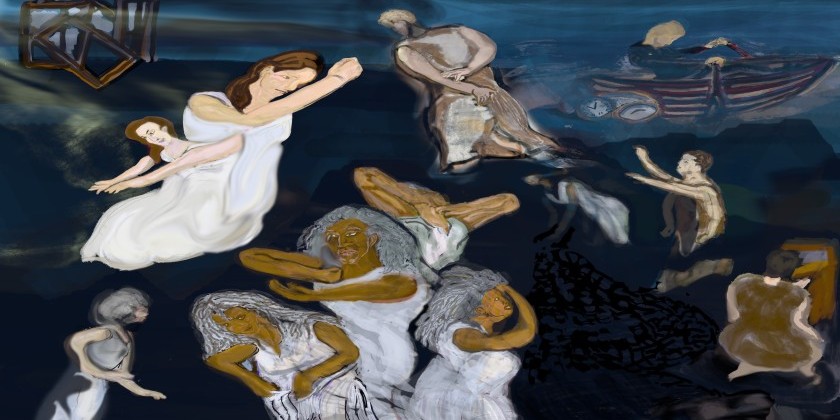AUDIENCE REVIEW: BERLIN: Work-in-Progress by Charlie Prince
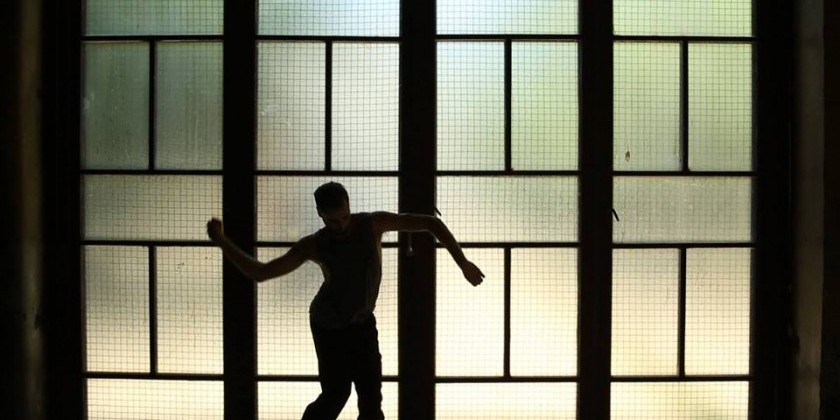
Company:
Charlie Prince
Performance Date:
October 26th 2017
Freeform Review:
The dancers, Charlie Prince and Hoor Malas introduce themselves. From Syria and Lebanon respectively, the duo have been working together on an untitled work-in-progress in Lebanon and Berlin for the past months. As the evening begins, Prince jumps excitedly on the stage (a basic rehearsal floor) of the Tanzfabric Wedding location. Prince is wearing a comfortable flowing shirt, made of a patchwork of ombre-colored earthy hues. I can imagine the feeling of that shirt, a matte silkiness. I imagine moving and letting the touch of the shirt move with me. In my imagine embodiment the shirt is an aid in my experience of movement, as opposed to a prop, or a separate agent. Prince’s clothing style is that of this generation of movers, the generation of both comfort and virtuosic obsession. Although Prince’s dance work is more of an informal showing, and perhaps the costuming in the final piece will differ, it brought to mind the perception of clothing or costuming I’ve seen throughout the dance world lately. Although stripping dance down to the basics, and performing in rehearsal, everyday or practice attire has been present in work of the past decades, ideas of comfort and practicality continue to be relevant. Even within the high-art arenas of western ballet or contemporary dance where a costume is at its height as an extensively designed prop or aesthetic attachment, the aesthetic of the everyday is in constant dialogue.
This week a video of the New York City Ballet’s latest collaboration with fashion designers popped up on my newsfeed. Although the idea of clothing as art is heightened in this context with the addition of a named fashion designer, I was interested to listen to the artists talk of the “organic enthusiasm” that clothing can provide a mover, working to bring in comfort and creativity to both the dancers and the audience. With draping fabrics and airy shapes that mimic the dancers free-flowing movements, “a great costume can extend dance to a new territory.” In Charlie Prince’s flowing shirt sleeve I connected to this sensory experience of texture and muscular movement – clothing being one entry point for the audience to connect to a visceral understanding of gesture and experience.
Zoning back onto the Berlin stage, Prince begins to speak, and the sheer sleeves around his arms craft this billowy effect of sublime comfort. He talks of the development of his piece, a work-in-progress. The dance is an exploration of both a physical and musical score. Prince received a training in both dance and classical music, and often found himself compelled by the rituals, rhythms and imagery that surrounds the ‘tuning’ of a body, of an instrument, a group of humans, players and creators. This ‘tuning’ is an experience that has been ‘haunting’ him towards its exploration for some time now.
The piece begins. Prince and Malas begin to walk, ‘tuning’ into the space around them. Walking is a common starting point for many dance and movement classes that helps to bring awareness – to the floor, the walls, the air around us – all elements that partner and interact with any gesture or presence in space. As the pacing develops the dancers bodies begin to paint this space, outlining different spatial compartments by pausing in certain areas of the stage. Crumbling into the sensation of a melted arm, Prince’s limbs slowly extend into previously invisible pockets of space. His movement defines areas the audience left unnoticed. From the initiation of walking the duo invite these series of physical images to be read across the stage. In the dancer’s bodies I see the physical lull of a violin’s string, the equilibrium of a steady jog, a clothes hanger, the letter ‘C’. An unexpected jump into a passé back, the accent on a note, that perfect execution of a technical feat. I notice the internal conversation of dancers preparing their body to move – not quite satisfied, try again, sync up with the mover next to you. A coordinated sequence develops out of this language of movement and imagery. A conversational sentence, made up of those images – the clothes hanger, the letter ‘C.’ Huffs and pants grow as repetition of a sequence changes the energy needed to execute movement. Smiles widen between Malas and Prince as the boundaries of physical limitation are stroked.
Eventually, the frantic nature of the body crescendos into contact between the two dancers. Face to face. Eyes glancing. Cross legged. Synchronized to an internal rhythm, an internal metronome, a heartbeat. The sound of an orchestra turning fades in, and the dancers gently press their knuckles against each other, mountain ranges colliding. The pressed sensation moves through their hands and into their arms, building the shape of a pyramid, yielding to each other’s weight. A dialogue in comfort, in support. A slow rocking. This back and forth of energy set against the score of the orchestra. The coalescing sounds bring to mind the echoing noise of a boat, sloshing waves, cries from seagulls. Curved backs take on this shape of waves, the palms that still touch, the wave’s frothy peaks. The seascape crafted by these bodies builds, almost tempestual. Yet the sound of tuning instruments remains calm – casual in its anticipatory state.
After the storm passes, a palm finds a skull and Malas’ hand manipulates Prince’s – dictating where his head should trail next in space. Prince’s hand responds back and eventually a new communication emerges. One palm, then the next, weaving a trace of movement – a cat’s cradle of tangled arms. As this weaving begins to fade the dancers seem reluctant to release their knitted craft, woven memory, significant interaction. For a while the bodies find new comfort in mirroring the other, still relying on one another to move. They bow, but not to an audience, it seems that they bow to the experience that just passed. Their acknowledgment of release allows the piece to move on, entering its next phase.
The music shifts into a slow flowing hum of unrecognizable digital frequencies. The dancer’s movement takes on a new quality – daring, engaged, confident and warm. Malas stretches her limbs longer than before, and Prince removes the long-sleeved clothing of comfort. The dancers are warm now. They have provided the audience with a glimpse, a metaphor of their means of ‘tuning in.’ Confidence builds. There is an attempt to balance, and suddenly there is a moment of awareness, of the audience, of the world, of the bare skin that is now on display – an unwelcome loss of warmth, try to begin again. Collapse. Prince falls to the floor. No sound. Nothing.
The frequency shifts again. Now a crackling sound releases itself from a handheld boom box that Malas grabs from the side of the stage. This is the tuning of the casual, the everyday – the movements your hand makes as you shift between radiostations in your car. In this mundane zone the body blurs, becomes indistinct, a landscape of the abstract. Crouched on all fours with his upper body facing us, Prince’s shoulder blades converse, replacing his head, displacing our somatic understanding of him. Twitching muscles, sweat matted shoulder blades, mountainous bulges of flesh, of earth. Malas stands in front of Prince and out of his shoulder blades grow a pair of fresh arms. Migrating through her hip bones these are unrecognizable appendages, causing her body to twitch and shift in uncontrollable directions. The radio she holds moves more rapidly now through various genres, channels, distortions.
At a certain point she lands on a classical tune, and the sudden change in tone causes this amorphous body to speak. “Can somebody help me?” Malas asks? “Have you ever felt as though your body doesn’t belong to you?” With voice comes a new physical awareness. Her words bring me into my own body. There is even a tension I feel within the body of the audience as we mediate whether we should break the audience-performer barrier and respond to her call for help. Yet before we have time to do so, the dancers continue. “Breakfast with Beethoven” she says, and I suddenly feel the warmth of California sun reflected through my fathers car window and onto my arm. I breathe in the nostalgia of past sundrenched journeys as Malas asks “Do you have memories of being in your body?”
Prince’s work-in-progress is an ode to the experience of movement and sensation. I look forward to seeing its progression with the addition of live musicians, sounds and bodies.
Writer: Anastasia McCammon
https://anastasiamccammon.wordpress.com/






